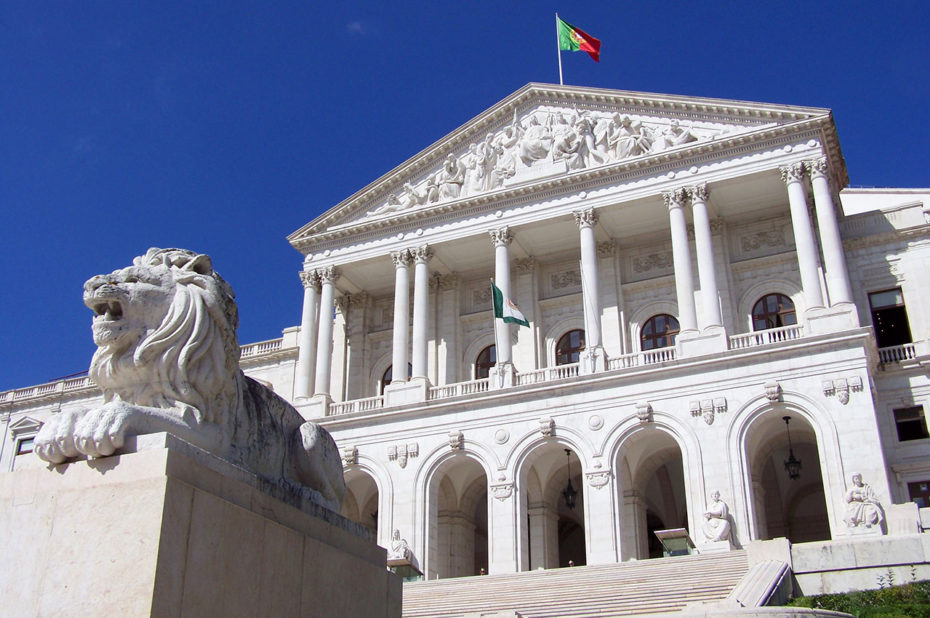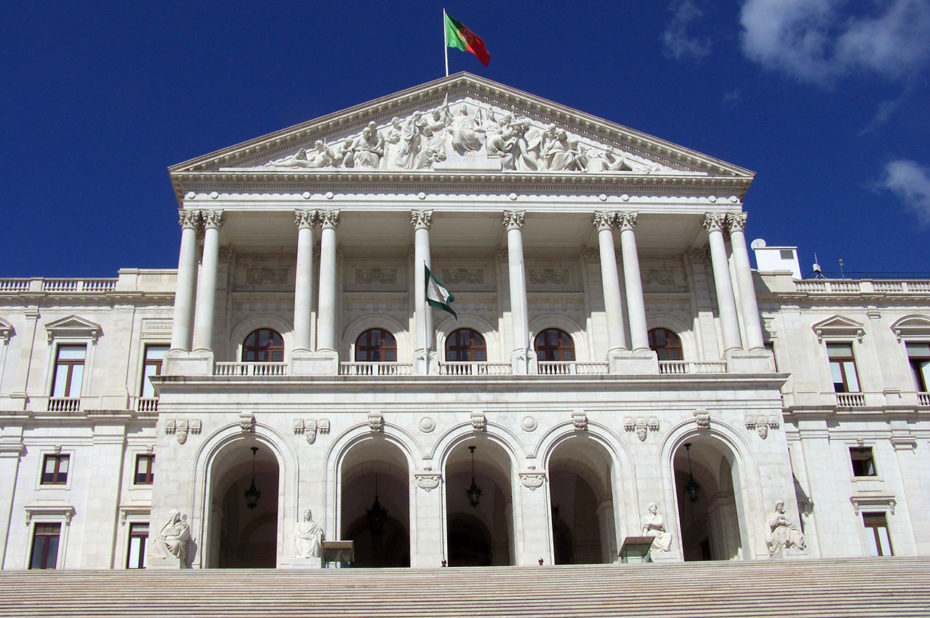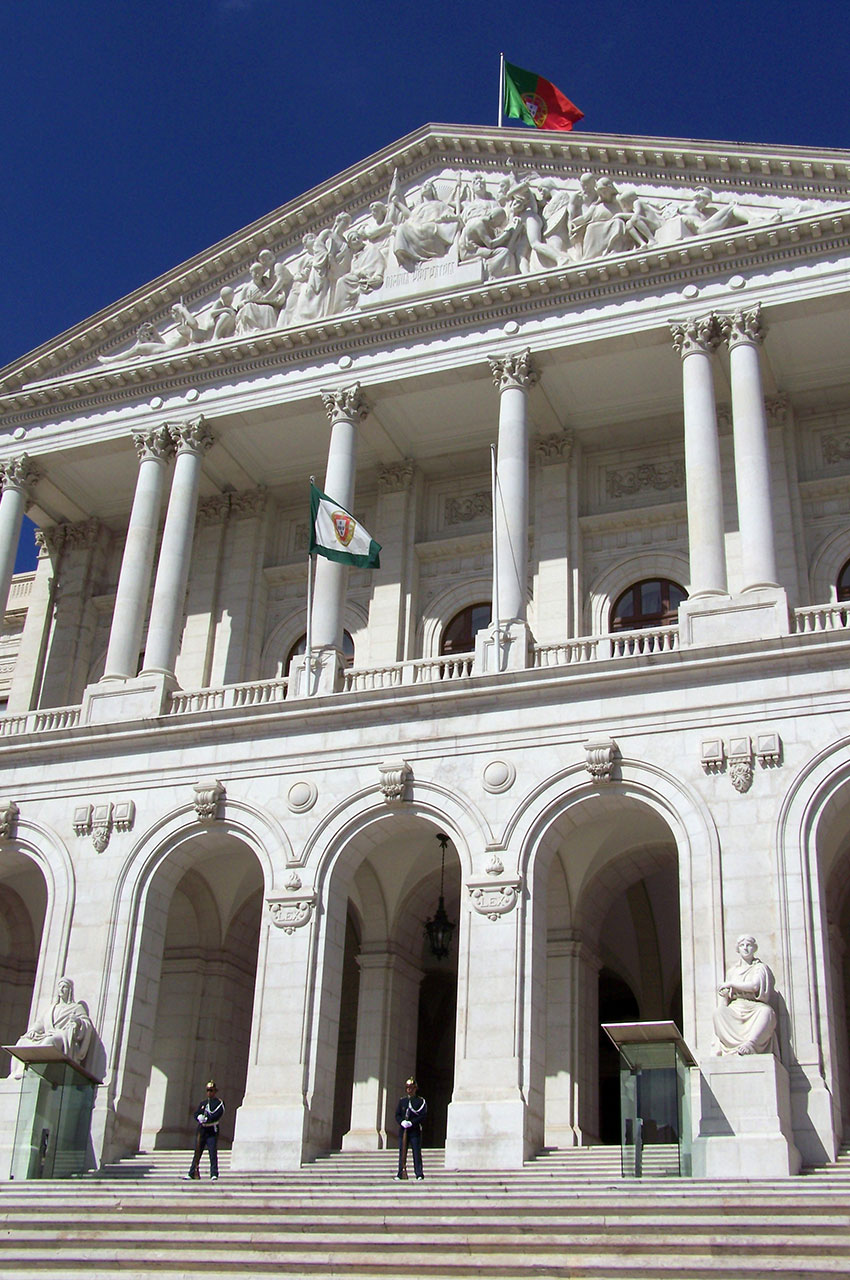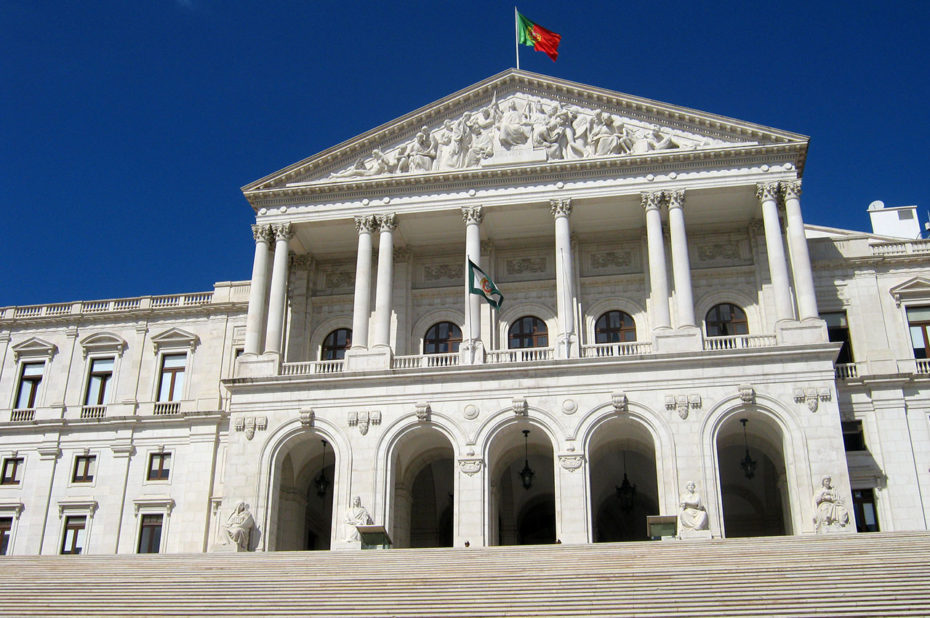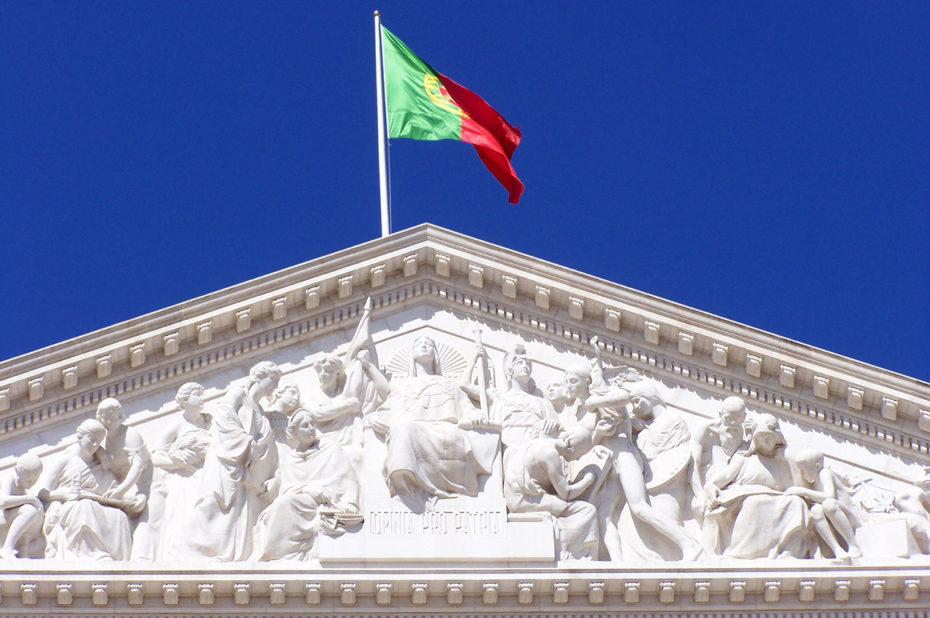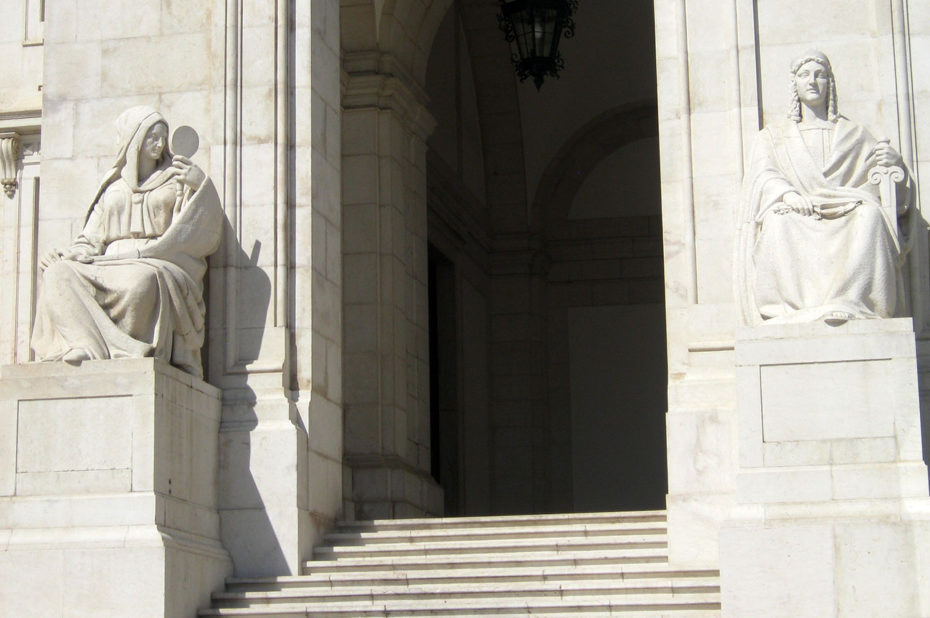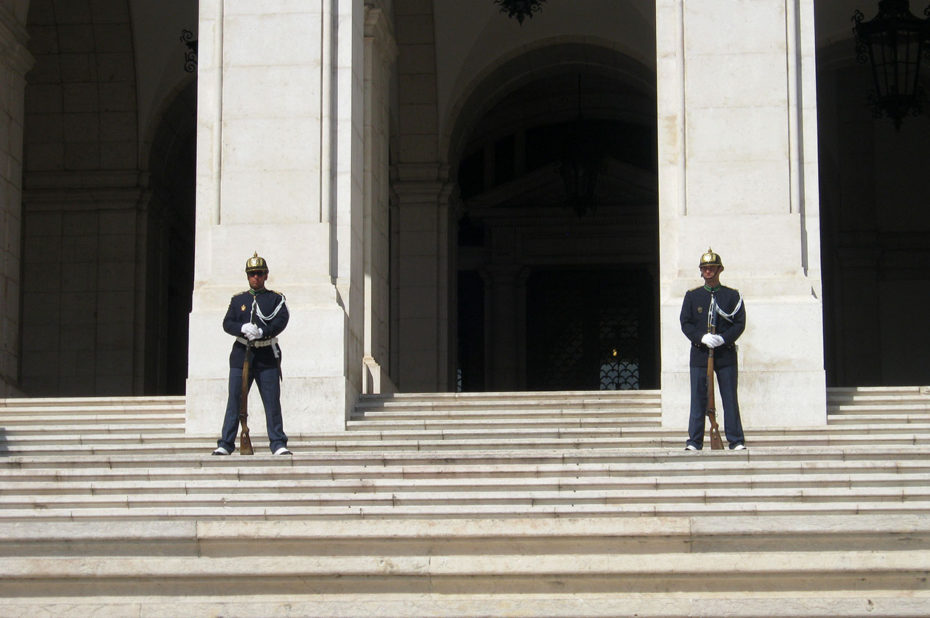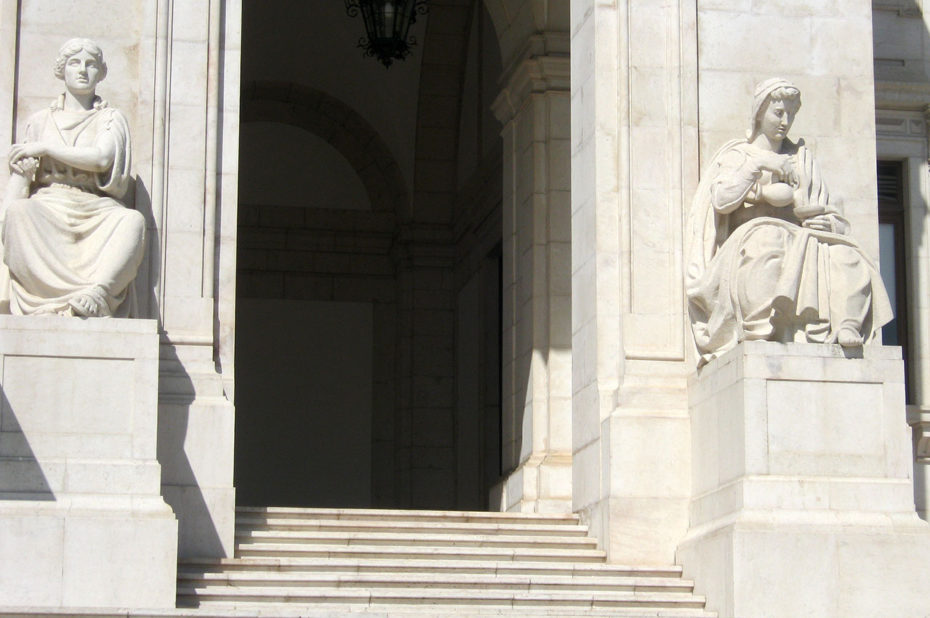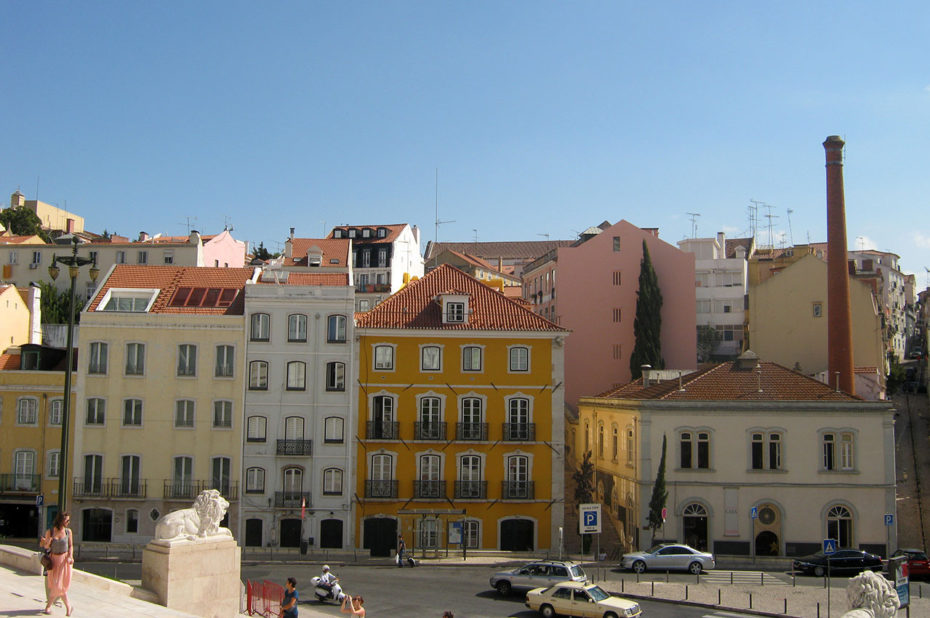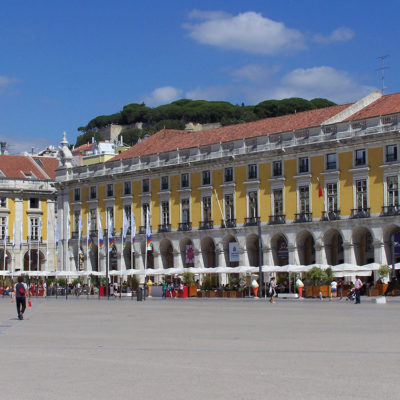
The Portuguese Parliament meets in the São Bento Palace, originally built as a monastery for Benedictine monks. Indeed, in 1598, the Benedictines began construction of a new monastery to accommodate their rapidly growing community. But in 1834, when the religious orders were suppressed, the government confiscated it and installed the Portuguese parliament there.
The most impressive feature of São Bento Palace is its monumental neoclassical façade. The large, five-porch central portico is surmounted by a balcony with thirteen Corinthian columns supporting a wide, thirty-meter pediment. The bas-reliefs on the tympanum were created by the Portuguese sculptor Simões de Almeida. Two lions, sculpted by Raul Xavier, guard the wide staircase leading to the palace’s main entrance. Four marble statues representing Prudence, Justice, Strength and Temperance are perched opposite the entrance.
The largest and richest rooms in the São Bento Palace, located on either side of the atrium, are the Senate Chamber and the Parliamentary Chamber. Behind the palace is a formal garden with geometric flower beds arranged on a terraced slope. The garden is decorated with fountains, niches and sphinx statues.
The visit to São Bento Palace was made on September 21, 2012.
Click on the picture to enlarge it and discover its caption.
